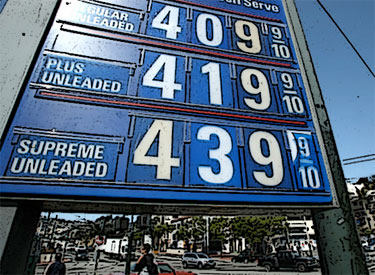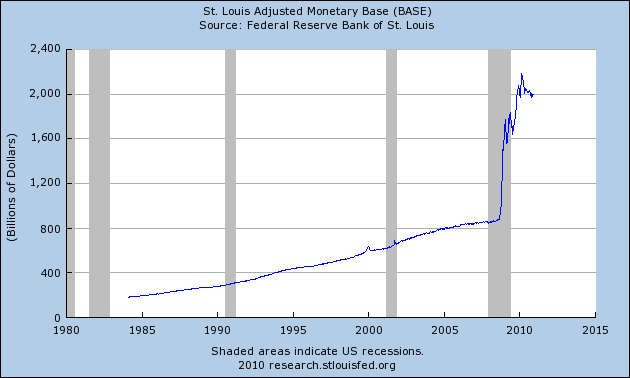Not long ago, if you wanted steak for lunch at the Texan Restaurant, less than two minutes drive from the Nexteer Automotive assembly plant, you had to be in the door by 11 o'clock in the morning. If you arrived any later, you joined a long line with other laggards and waited for a table to open up.
With noon fast approaching on a recent day, however, only a handful of customers sat in one of the restaurant's two sections and the other was closed.
Asked how the decline in the U.S. auto industry has affected the local economy, Tammy Maynard, a waitress here since 1988, waved a hand around at the empty tables and said: "You're looking at it, sugar."
Regulars and retirees keep the restaurant in business, while workers at the nearby auto supplier plant buy steak at the beginning of the month when they get paid -- if they come at all -- and then dine on specials over the next four weeks.
"I just keep praying every day that we've hit the bottom and that things are going to get better," Maynard said, "because it doesn't seem like it could get any worse."
The U.S. government may have bailed out General Motors, the country's largest automaker, but it hasn't begun to tackle the broader problems that led to the city's implosion. Doing so, experts say, would require the kind of political will that has not been in great evidence in the country recently.
To the few remaining auto workers left in a city half the size it was in 1960, the America they knew growing up is long gone and things can only get worse.
"We have made concession after concession on wages and benefits and there is no end in sight," said Dean Parm, a worker and union committeeman at Nexteer Automotive, whose hourly wages have been cut to around $17 an hour from $28. "It feels like we're dinosaurs. And we're on the verge of extinction."
This is the point of the story where many Americans typically glaze over because they see Michigan as a long-standing financial basket case of a state thanks to the shrinking U.S. auto industry. But the problem is that the broad decline of the manufacturing sector that has been underway in this country for decades now may threaten not just the long-term health of the economy but also the living standards of all but the wealthiest Americans.
"The whole country is now seeing the story that Michigan has been living with for a long time," said Diane Swonk, chief economist at Mesirow Financial. "We have kicked the can so far down the road that now all we have is a cliff to fall off."
"The recession merely revealed a reality that has been with us for a long time. We faced a growing gap in education and skills that we tried to fill with debt and credit, which gave us the illusion of growth."
After World War Two, unskilled blue-collar jobs in manufacturing -- typified and in many ways defined by the auto sector -- became America's easy path to the middle class. As U.S. manufacturing declined, starting in the 1980s Congress and successive administrations focused instead on the financial sector and relied on debt -- its own and that of the U.S. consumer -- to foster economic growth.
At the same time, U.S. companies faced a growing competitive challenge, largely from Asia -- both in terms of manufacturing prowess and lower wages and legacy costs -- that hastened the nation's exodus from the sector.
That in turn created lop-sided trade imbalances, with the U.S. invariably in the red. The U.S. trade deficit with China, for instance -- a nation that tightly controls its imports -- hit a record of $268 billion in 2008 and could reach $270 billion this year.
At the other end of the spectrum, deregulation and a laissez-faire attitude toward financial institutions culminated in the housing "boom" that former Ohio Attorney General Richard Cordray (who failed to win reelection in November) has aptly described as a "Roman orgy" of debt.
Read more
Recently, my wife (who has always been extremely healthy) developed some alarming breathing problems. She did not appear to suffer from any known medical condition, so we were completely puzzled.
Finally, we started examining what we were eating and drinking. It turns out that she was putting some cream in her coffee that contained something known as "Polysorbate 80". Polysorbate 80 is found in a vast array of dairy products and is even used in many vaccines. According to Drugs.com, "difficulty breathing" is indeed one of the known side effects of Polysorbate 80. Once my wife cut the Polysorbate 80 out of her diet, the breathing difficulties subsided. The following is how she describes what she went through....
Prior to my recent problems, I had never been in a situation were I felt as though there was very limited air available. When the breathing problems would flare up, I would take in deep breath after deep breath but I just couldn't get any oxygen. My body tried to cope by constantly yawning which forced air into my lungs. Some days it wouldn't be so bad, but on other days it was really frightening. My breathing was extremely labored at times. I constantly had to yawn throughout the day in order to catch a satisfying breath. One day my breathing was really labored - I was constantly gasping for deep breaths, but I wasn't getting enough oxygen. I was about to cry. I felt as though I had dived to the bottom of a deep pool and I was almost out of air. My body was in a constant state of panic. I felt so tired and I was worried that I may collapse at any time. We got into the car, and I was almost ready to pass out. We had the windows rolled down to give me the feeling of lots of oxygen, but I felt like I couldn't take any in. Fortunately that episode eventually subsided, but there were many days when I was in agony. You cannot imagine how horrible it is to gasp for breath and never seem to get enough. Several incidents really scared me. What was even more frightening was that I had no idea at the time what was causing all this.Thankfully my wife is doing much better now, but there are thousands and thousands of others across the United States that are experiencing similar breathing problems and nobody has any answers for them.
So what are some of the other side effects of Polysorbate 80?
Well, Drugs.com says that the following are "common" side effects....
Constipation; cough; diarrhea; dizziness; headache; muscle, joint, back, orIn addition, Drugs.com says that the following are severe side effects of Polysorbate 80 that an individual should seek immediate medical attention for....stomach pain ; nausea or vomiting; pain, swelling, irritation, redness, or bruising at the injection site; unusual tiredness or weakness.
Severe allergic reactions (rash; hives; itching; difficulty breathing; tightness in the chest; swelling of the mouth, face, lips, or tongue); blurred vision or vision changes; chest pain; confusion; fainting; fast or irregular heartbeat; flu-like symptoms (fever, chills, sore throat); one-sided weakness; pale skin color; redness, tenderness, or swelling of the calf; seizures; severe diarrhea, dizziness, headache, stomach pain, or vomiting; severe or persistent tiredness or weakness; slurred speech; sudden pain or numbness of an arm or leg; sudden shortness of breath; sudden trouble walking or loss of balance; swelling of the arms or legs; vision or speech problems; weight gain.Remember, this is in countless dairy products all across the United States. Most Americans are absolutely clueless that they are pouring Polysorbate 80 into their coffee or that it is in the ice cream that they are eating.
Another major threat to our health is something called bisphenol-A (BPA). BPA is one of the most widely used chemicals in the entire world. If you eat canned food or you drink bottled water you most likely have BPA in your home and you don't even know it.
According to Natural News, BPA is not only in virtually every American home, but it has also been linked to some very serious health problems....
It is used to harden plastic in everything from infant and water bottles to mobile phone and computer casings, and also to make linings for cans of food, beverages and infant formula. Yet a growing body of research has implicated the chemical as an endocrine (hormone) disruptor that can lead to cancer, birth defects, behavioral problems and other diseases.Shouldn't someone be doing something about this?
Of course.
But the truth is that the big corporations that are pushing these chemicals are much more powerful than those who are trying to watch out for our health.
In fact, authorities all over the United States are putting one very toxic chemical into our water on purpose.
It is called fluoride, and it is being put into our water supposedly because it is good for our teeth. What Americans are not being told is that fluoride is actually a highly toxic sedative and is causing a whole host of very serious health problems.
So exactly how dangerous is fluoride? Well, the Fluoride Dangers blog puts it this way....
Even small amounts of fluoride consumed from tap water can damage your bones, teeth, brain, disrupt your thyroid function, lower IQ and/or cause cancer, according to evidence revealed in a groundbreaking 2006 National Research Council (NRC) fluoride report produced by a panel of experts who reviewed hundreds of published fluoride studies.
The Natural Health and Longevity Resource Center has published a list of ten of the most significant health dangers that the scientific research has shown that fluoride causes.....
1. Fluoride exposure disrupts the synthesis of collagen and leads to the breakdown of collagen in bone, tendon, muscle, skin, cartilage, lungs, kidney and trachea.But perhaps even more dangerous is the sweetener known as aspartame. Today, aspartame is an ingredient in literally thousands of different food and drink products. In fact, it is often marketed in "health products" such as diet sodas.
2. Fluoride stimulates granule formation and oxygen consumption in white blood cells, but inhibits these processes when the white blood cell is challenged by a foreign agent in the blood.
3. Fluoride depletes the energy reserves and the ability of white blood cells to properly destroy foreign agents by the process of phagocytosis. As little as 0.2 ppm fluoride stimulates superoxide production in resting white blood cells, virtually abolishing phagocytosis. Even micro-molar amounts of fluoride, below 1 ppm, may seriously depress the ability of white blood cells to destroy pathogenic agents.
4. Fluoride confuses the immune system and causes it to attack the body's own tissues, and increases the tumor growth rate in cancer prone individuals.
5. Fluoride inhibits antibody formation in the blood.
6. Fluoride depresses thyroid activity.
7. Fluorides have a disruptive effect on various tissues in the body.
8. Fluoride promotes development of bone cancer.
9. Fluorides cause premature aging of the human body.
10. Fluoride ingestion from mouth rinses and dentifrices in children is extremely hazardous to biological development, life span and general health.
According to an article on Mercola.com, aspartame is one of the most toxic substances being added to our foods....
Aspartame accounts for over 75 percent of the adverse reactions to food additives reported to the FDA. Many of these reactions are very serious including seizures and death. A few of the 90 different documented symptoms listed in the report as being caused by aspartame include: Headaches/migraines, dizziness, seizures, nausea, numbness, muscle spasms, weight gain, rashes, depression, fatigue, irritability, tachycardia, insomnia, vision problems, hearing loss, heart palpitations, breathing difficulties, anxiety attacks, slurred speech, loss of taste, tinnitus, vertigo, memory loss, and joint pain.According to Dr. Janet Hull, the following are known side effects of ingesting aspartame....
According to researchers and physicians studying the adverse effects of aspartame, the following chronic illnesses can be triggered or worsened by ingesting of aspartame: Brain tumors, multiple sclerosis, epilepsy, chronic fatigue syndrome, parkinson's disease, alzheimer's, mental retardation, lymphoma, birth defects, fibromyalgia, and diabetes.
EyeSadly, there are thousands more toxins and chemicals that are being put into what we eat and what we drink. The next time you go to the supermarket, just pick up a few products and start reading the labels. You may find yourself incredibly shocked by what you find.
blindness in one or both eyes
decreased vision and/or other eye problems such as: blurring, bright flashes, squiggly lines, tunnel vision, decreased night vision
pain in one or both eyes
decreased tears
trouble with contact lenses
bulging eyes
Ear
tinnitus - ringing or buzzing sound
severe intolerance of noise
marked hearing impairment
Neurologic
epileptic seizures
headaches, migraines and (some severe)
dizziness, unsteadiness, both
confusion, memory loss, both
severe drowsiness and sleepiness
paresthesia or numbness of the limbs
severe slurring of speech
severe hyperactivity and restless legs
atypical facial pain
severe tremors
Psychological/Psychiatric
severe depression
irritability
aggression
anxiety
personality changes
insomnia
phobias
Chest
palpitations, tachycardia
shortness of breath
recent high blood pressure
Gastrointestinal
nausea
diarrhea, sometimes with blood in stools
abdominal pain
pain when swallowing
Skin and Allergies
itching without a rash
lip and mouth reactions
hives
aggravated respiratory allergies such as asthma
Endocrine and Metabolic
loss of control of diabetes
menstrual changes
marked thinning or loss of hair
marked weight loss
gradual weight gain
aggravated low blood sugar (hypoglycemia)
severe PMS
Other
frequency of voiding and burning during urination
excessive thirst, fluid retention, leg swelling, and bloating
increased susceptibility to infection
Additional Symptoms of Aspartame Toxicity include the most critical symptoms of all
death
irreversible brain damage
birth defects, including mental retardation
peptic ulcers
aspartame addiction and increased craving for sweets
hyperactivity in children
severe depression
aggressive behavior
suicidal tendencies
Aspartame may trigger, mimic, or cause the following illnesses:
Chronic Fatigue Syndrome
Epstein-Barr
Post-Polio Syndrome
Lyme Disease
Grave’s Disease
Meniere’s Disease
Alzheimer’s Disease
ALS
Epilepsy
Multiple Sclerosis (MS)
EMS
Hypothyroidism
Mercury sensitivity from Amalgam fillings
Fibromyalgia
Lupus
non-Hodgkins
Lymphoma
Attention Deficit Disorder (ADD)
Does it seem like people all around you are constantly getting sick? Well, the truth is that we have created an incredibly toxic environment for ourselves. Diseases such as cancer, heart disease and diabetes have skyrocketed in recent years. We like to think of ourselves as being so "advanced", but the truth is that we are constantly becoming less healthy as a nation.
It is hard to imagine any prosperous economy that is full of sick and dying people. But if we don't stop constantly poisoning ourselves by what we eat and by what we drink our national health is going to continue to fall apart.
Just like in almost every other category, America is in a deep state of decline. We like to think that we should be telling everyone else in the world how they should be doing things, but the truth is that our own nation is a complete and total mess.
If your own health is not what it should be, you might want to take another look at what you are eating and what you are drinking. A small change can make a big difference.


